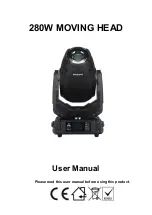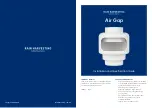
19
l
using only mild detergent
l
using only a sponge or soft nylon brush
l
using fresh clean water to rinse the detergent off the lanyard
l
drip dry the equipment
l
allowing the lanyard to thoroughly dry out before next use
l
ensure that the following cleaning methods are NOT used:
l
water over 40º C
l
bleach
l
any detergent not suitable for bare skin
l
wire brushes or other scouring agents
l
jet wash or other power products
l
radiators or other direct heat sources
l
ensure that a thorough visual and tactile examination of the lanyard is made after cleaning, before the
item is allowed to be re-used.
Storage
l
ensure that the lanyard is stored in an area that is:
l
clean
l
free from airborne contaminates (e.g. dust or sand)
l
free from harmful chemicals (liquid or fumes)
l
dry
l
not in direct sunlight
l
not subject to extreme temperatures (below -15°C and above +50°C)
l
ensure that the lanyard is not stored under tension or load
l
store ideally in a purpose supplied bag box or cabinet
These lanyards are classed as Personal Protective Equipment (PPE), by the European PPE Directive
89/686/EEC and have been shown to comply with this directive through the harmonized European
standards
EN 354:2002
Personal Protective Equipment against falls from height Lanyards
EN 355:2002
Personal Protective Equipment against falls from a height Energy absorbers
EN 358:2000
Personal Protective Equipment for work positioning and prevention of falls from height Belts
for work positioning and restraint and work positioning lanyards
Certification body:
TÜV NEL Ltd, East Kilbride, Glasgow, Scotland, G75 0QU, UK
(Notified Body 0320)
Quality Management System to DIN
EN ISO 9001:2000
, controlled and audited by Prüf- und
Zertifizierungsstelle des FA PSA, D-42781 Haan, Germany (Notified Body 0299).
GB
















































